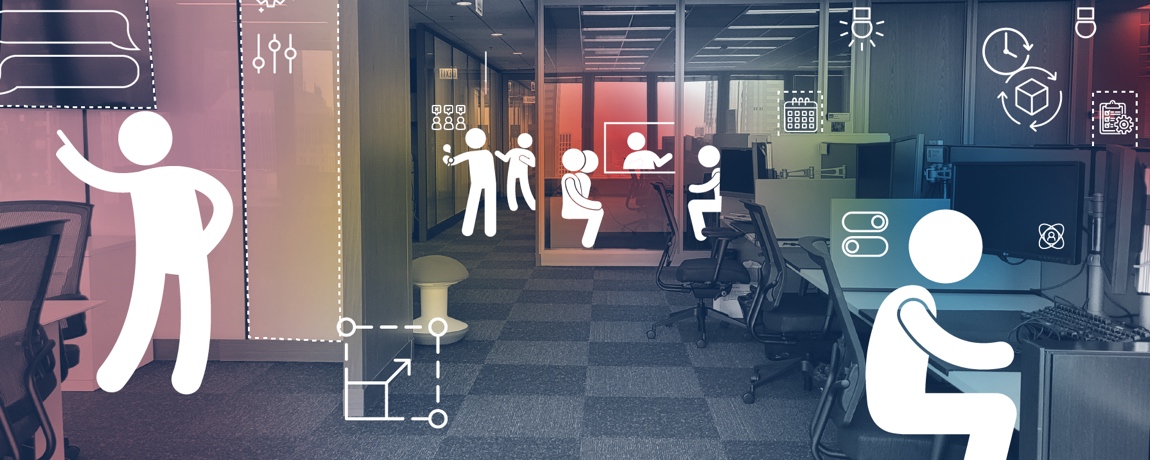
Services
- Change Management
- Pre-Design
- Schematic Design
Client: The General Services Administration
Location: Ft. Worth, TX & Chicago, IL
Date: 2021-2022
Download: Project Sheet
Client Objectives
- Developed a new employee engagement toolkit, which the GSA uses for both internal and external purposes
- Established a thorough account of GSA employees’ everyday experience
- Created more flexibility in space types by categorizing the GSA’s physical real estate under different “space layers:” fixed, fluid, and flex.
- Conveyed potential and ongoing workplace shifts to Federal workers through change communications
The General Services Administration
Engaging with Workers in a Whole New Way
The General Services Administration (GSA) is the independent governmental agency responsible for serving federal agencies’ essential infrastructural needs, from office space to technology and transportation. After building a Workplace 2030 outlook that primarily focused on its clients’ evolving workplace needs, the GSA was ready to start developing a new workplace strategy for its own employees. Some of the necessary preliminary research on the future of work had already been done, since the GSA’s ongoing shifts were not unlike those it had observed in its clients. But how it would oversee its own evolution remained an open question.
Toward this end, PLASTARC continued its engagement with the GSA by embarking on a full assessment and redesign of the GSA’s employee engagement toolkit, which it uses to assess the work-related needs of both its clients’ and its own employees. The fully revamped toolkit included a new workplace survey, a new day-in-the-life self-quant mechanism, a distributed environment assessment, and a new set of workshops that could help the GSA and its clients more holistically understand employees’ day-to-day needs. By accounting for space, technology, and work support in the engagement toolkit, PLASTARC created a feedback system that could account for the dynamic and diverse needs of any Federal workforce.
Once these research tools were fully articulated, PLASTARC implemented them at two pilot offices in Chicago (Region 5) and Ft. Worth (Region 7). The two offices offered a stark contrast that would help test the tools’ adaptability across contexts: Region 5 was more progressive in its workplace policies and had undergone multiple recent updates, whereas Region 7 was more traditional and had not seen significant renovations in over ten years.
After using these tools to collect a range of quantitative and experiential data from GSA employees, PLASTARC provided several customized, implementable recommendations for the pilot offices that could be more broadly applied to other internal and external contexts. These recommendations ranged from spatial elements, like biophilic design plans and the creation of a “front porch,” to more technological solutions, such as smart-building feedback systems and app-based professional support. Today, the GSA is piloting some of these proposed solutions as it continues its pilot programs in Regions 5 and 7.

